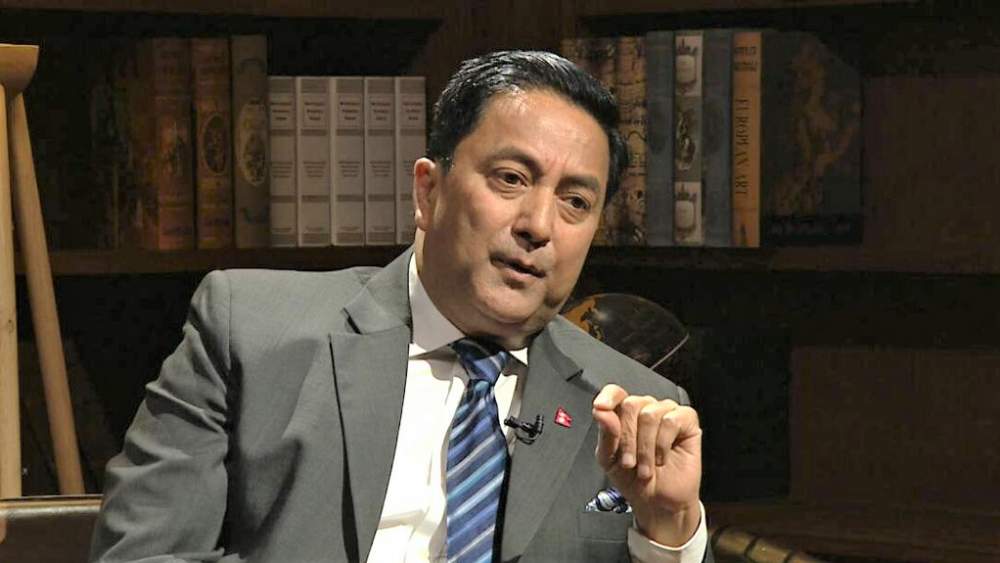

Binoj Basnyat ,The root of Nepal predicament on current geopolitical displeasures lie in the lack of strategic management for national security. Kathmandu is witnessing an uproar against another Indian encroachment, this time of Nepalese Territory. An all party assembly chaired by PM Oli is trying to come up with re-active strategies to contain the border dispute, which in fact should have been managed much earlier.
Opening the north border is time demanding for stability but mismanagement and lack of vision of boundary, encroachment, lack of border security force will invite yet another boundary dispute with dissatisfied population and may be another political uproar in front of the Chinese Embassy.
An updated political map of India continues to show a 35 square kilometre area in Kalapani in northwest Nepal as being a part of India. Kathmandu and New Delhi maintain that the territory is part of their country, which was affirmed through the statements of the respective foreign ministries, making it disputed. An all-party assembly chaired by Prime Minister Oli is trying to come up with reactive strategies to contain the border dispute which should have been managed much earlier.
Article 5 of the 1816 Treaty of Sugauli and the 1950 Treaty of Peace and Friendship depict Lipulek, Kalapani and Limpiyadhura as part of Nepal. Statements issued by the British Survey of India on February 1, 1827, and April 24, 1856, show the Kalapani area within Nepal and the Kali River as the border with its source being Limpiyadhura.
Yet, there are 31 incidents of encroachment, and 1,240 of the 8,000 boundary pillars along the Nepal-India border are missing. In 1981, a Joint Technical Level Nepal-India Boundary Committee delineated 98 percent of the India-Nepal boundary excluding Kalapani and Susta. The maps were submitted for ratification in 2007, but the process has not been completed as Nepal has maintained that the map will be ratified only after all boundary issues including Kalapani and Susta are settled.
Parliament objected to the Indo-China trade agreement through Lipulek Pass in 2015 as a violation of Nepal’s sovereign rights over the territory. The Mahakali Treaty, the first bilateral water treaty signed between Nepal and India in the Panchayat era, has not yet been developed even after more than two decades. There were multiple democratic expressions criticising Chinese encroachment in Sankhuwasabha, Rasuwa, Sindhupalchok, and Humla on the northern border. For stability, Nepal’s northern border must be opened. But mismanagement, encroachment and the lack of border security force will invite yet another boundary dispute with China.
This depicts the geo-strategic significance of Nepal’s location. British India regarded Nepal as a buffer between the Indian and communist empires. Nepal’s foreign policy to pursue equidistance between the two neighbours found manifestation in its Zone of Peace concept in 1975. When discussing borders, common challenges of terrorist activities and transnational crimes cannot be avoided as terrorism is a global threat, and South Asia is most vulnerable due to social complexities. Impacts of terrorist acts apply equally to big and small powers. Coordinating efforts in sharing information intended for common challenges like terrorism, human trafficking, and counterfeit Indian currency needs a resourceful and competent system of managing borders in South Asia.
Borders are a sensitive topic, one that can lead to disputes and diplomatic distress and ruin the political relationship and people-to-people affiliation. Geopolitics is not limited to neighbours any longer. We can look for patterns by reframing geopolitics in order to re-examine the past, experience the present with a new perspective and also anticipate the future.
The people’s concern can also be taken as an opportunity for both Nepal and India to invest in strict management without hampering the usual livelihoods on the 1,850-kilometre open border with India and the 1,414-kilometre border with China to address each other’s strategic issues and national security concerns. This will also supplement Nepal’s foreign policy of not allowing Nepali territory to be used to undermine India’s security concerns and China’s policies.
Nepal needs to work out an alternative security model for supervising, organising and administering the borders before political consultations and choices are through. But political decisions should be made between the governments for a durable settlement. The Kalapani and Susta encroachment must be prioritised with the revival of the 1981 Joint Technical Level Nepal-India Boundary Committee report, now taken over by the Boundary Working Group established in 2014. Presently, the groups are more anxious about the construction, repair, and restoration of the boundary pillars than these important disputes.
The Armed Police Force has been tasked with diverse duties, including securing the border. An independent Border Security Force, operating under the Home Ministry, should be formed to administer the borders, pillars and the rights of citizens. Drones can be used to surveil the open border, and more importantly, we need to invest in information systems and infrastructure for intelligence.
Therefore, we must admit that the root of Nepal’s geopolitical predicament lies in the dearth of institutions for national security, effective administrative management and united national policies for a diplomatic approach. A national security strategy is fundamental to safeguarding Nepal’s national interest. There is a need to reposition, reorganise and revisit the defence, intelligence, and law enforcement forces after reviewing the country’s security challenges for the next five decades. How this can be achieved is a crucial question. The political parties must put Nepal’s interests before their own.
This article was first published in kathmandu post on Novemeber 25 th ,2019
Basnyat is a retired Nepali Army Major General and a political and security analyst.
Comment